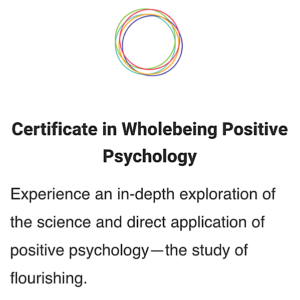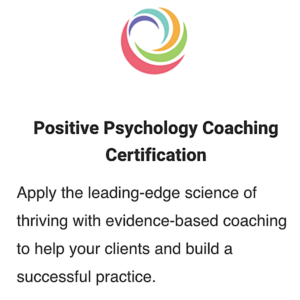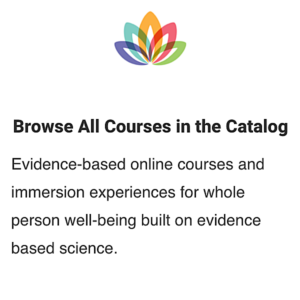by Phoebe Atkinson and Lori Tuominen
“What happens if we turn our attention to what is most valuable, life-giving, and vibrant in a human system?”
—Ronald Fry, PhD, professor of Organizational Behavior at Case Western Reserve University
That is a question that Wholebeing Institute is in the midst of exploring. In our earlier post, we wrote about creating WBI’s AI Summit in April, and Maria Sirois, lead facilitator for the Summit, shared the next steps of the process, which continues to unfold.
An AI summit is informed by five key principles and by the 4-D model created by David Cooperrider and his colleagues. The four stages of the model are
● Discover: what’s working well
● Dream: what might be
● Design: how to move to where you want to go
● Destiny: what actions to take.
However, in their book Your Change Blueprint, Cooperrider and his coauthor Michelle McQuaid point out that, rather than a 4-D cycle, an AI summit actually requires an extended 6-D cycle. The design must also include an initial “Define phase” focused on choosing a generative topic, and a post-summit “Drum phase,” in which the task is to keep up the momentum and maintain the commitment to change.
Following this design model, the WBI pre-summit committee worked through the Define phase by identifying stakeholders—those who would represent diverse voices across the WBI system, including alumni from the CiPP program, students from other courses, faculty, guest teachers, positive psychology researchers, and others in the WBI community. The committee was tasked with holding a series of generative conversations with these stakeholders before the summit to begin defining WBI’s positive core—those life-giving elements that reflect the best within the organization’s system.
Inquiry as Intervention
The committee crafted a series of questions for stakeholders, rooted in the five AI principles:
● Constructionist: What do we want to co-create?
● Simultaneity: What impact do we want our words to have?
● Poetic: Are you looking for what’s working well and what’s possible?
● Anticipatory: Are we open to anticipate the best from others?
● Positive: What is the most positive and inspiring question we can ask?
The questions sought to deepen awareness, increase understanding, and ignite curiosity among WBI leaders, committee members, and stakeholders, and to bring together many different perspectives. AI infers that change begins the moment that we ask the very first question; therefore, framing the questions for an AI summit is a very important task. The focus is deliberately geared towards choosing a positive framework, as AI is a strengths-based approach. That doesn’t mean that challenges are not addressed—they are—however, the focus is deliberately flipped so that difficulties are framed around positive outcomes. For example: What do we want more of? If this was working well, what would it look like?
These interviews would be conducted in the spirit of discovery, intended to uncover the forces and conditions that make up the positive core of WBI.
Three Powerful Generative Questions
AI principles suggest that “worlds create worlds”—that is, we tend to go in the direction of what we talk about the most. With this in mind, the team crafted the following questions for stakeholders:
1. (High Point Story) Think back on your connection with WBI. As a result of your connection, tell me about your best learning, experience, or growth. What happened? Who was involved? What made it possible? And, how did it feel?
2. (Impact/Enrichment) As you think about WBI, what are the core qualities or factors that make WBI an organization that transforms people’s lives positively and profoundly? What is the one thing WBI should not ever change?
3. (Future/Dream) Imagine that you’ve gone into a deep sleep and you wake up five years from now. WBI—the organization that you’re a part of and connected to—has been wildly successful. That success has lifted your own personal success, too, exceeding all your expectations. Tell me about what you experience; how you see, hear, feel, on this day five years in the future. How have you transformed? How has WBI transformed?How did WBI help you? How did you help WBI? How has WBI’s work/growth contributed to your success? How has your work/growth contributed to WBI’s success? Is there anything else you would like to add?
Identifying Common Themes
Themes and new ideas emerged in the interviews, and the committee compiled a list of topics, which were then used as the markers for each table at the Summit. Here are the themes that emerged.
Authenticity: The people who work for and with WBI are authentic at their core, beginning with the co-founders and extending to everyone who has been a part of the organization since its inception. This is demonstrated through the courses offered as well as the relationships built.
Embodied Wholeness: Wholebeing Institute demonstrates the embodied wholeness that comes from combining the terms “whole-person” and “well-being.”
Excellence:There is a sense of excellence in both the learning opportunities offered by WBI and what the organization demonstrates through leadership practices and the mission statement.
Generosity and Love: There is a sense of generosity and love—toward both each other and our students, as well as between students—that comes through in every interaction. This is especially obvious when alumni gather for activities such as the Summit.
Global and Personal: This juxtaposition was evident in nearly every conversation at the Summit. That duality—between individual intimacy and large-scale thinking in order to spread the reach—is inherent in the WBI brand.
Servant-Leadership: The modeling of leadership at WBI continues to be that of servant-leadership—the leaders themselves share the leadership and everyone involved is a leader in their own right.
Transformation: In interview after interview, stakeholders shared how transformative the Certificate in Positive Psychology, or Teaching for Transformation, or Positive Psychology Coaching was for their life and for the people around them.
Twelve Magic Mechanisms for Transformation
McQuaid and Cooperrider write that AI summits draw on 12 “magic mechanisms” that can be viewed as best practices to create transformational change. They are
● Invite the whole system into the conversation
● Agree to a bold, generative topic for inquiry
● Spark surprising connections
● Listen to ignite authentic positivity
● Align and magnify strengths
● Build a meaningful language of hope
● Embrace the messy process of convergence
● Harness positive urgency to amplify progress
● Prioritize a culture of effective giving
● Celebrate authentic grit
● Fuel diverse feedback loops
● Nurture gratitude and belonging.
Much more to come as the process continues!
“Relationships come alive where there is an appreciative eye, when we take the time to see the true, the good, the better, and the possible in each other and our universe of strengths.”
—Cheri B. Torres and Jacqueline M. Stavros, Using Appreciative Inquiry to Fuel Productive and Meaningful Engagement
Phoebe Atkinson, LCSW-R, delivers executive leadership programs and co-facilitates an ongoing program at Rutgers University Institute for Women’s Leadership. She is a licensed clinical social worker (LCSW-R) and a board-certified trainer, educator, and practitioner in psychodrama, sociometry, and group psychotherapy.
Lori Tuominen is a coach and educator whose practice is steeped in positive psychology. She has a master’s in Positive Organization Development and Change from Case Western Reserve University. A CiPP2 grad, Lori was a teaching assistant with the program for four years. She also teaches an online Foundations of Positive Organization Development course for Champlain College, has taught a first-year seminar class on positive psychology at UMass Amherst, and is a qualified Mindfulness-Based Stress Reduction (MBSR) teacher. Lori lives in Western Massachusetts with her husband of 33 years and loves to visit her kids and grandkids in Minnesota as often as possible, when she’s not tromping around the woods of Western Massachusetts. lorituominen.com








Thank you Phoebe and Lori! I love reading through those common themes, seeing the organization anew through these threads. I also related to this sentence, “and a post-summit “Drum phase,” in which the task is to keep up the momentum and maintain the commitment to change.” My new role as WBI Chair and the General Manager at Kripalu for RISE came out of a realization I had at the Summit, and reminds me to keep on growing into the bigger vision. It takes daily work! I appreciate your daily work in writing this blog, and being such an integral part of WBI over the years. So grateful to you both.